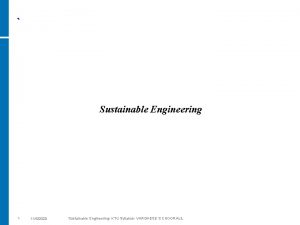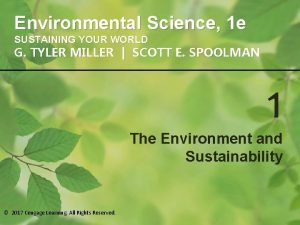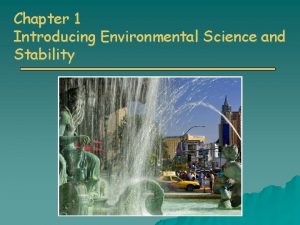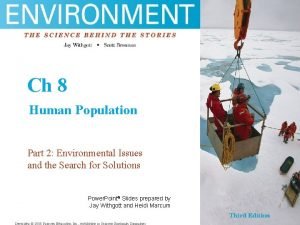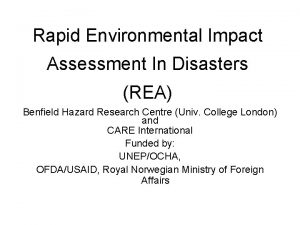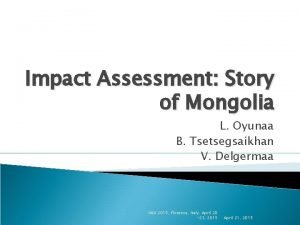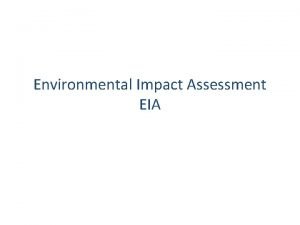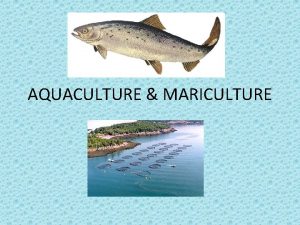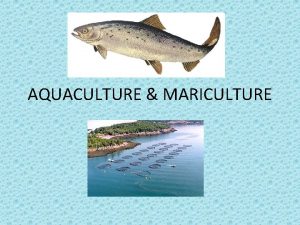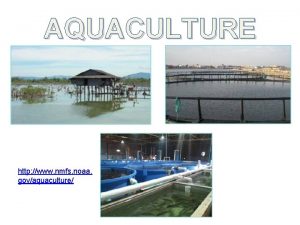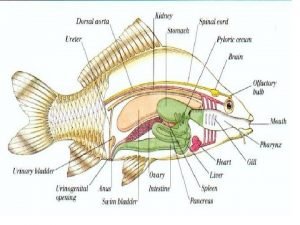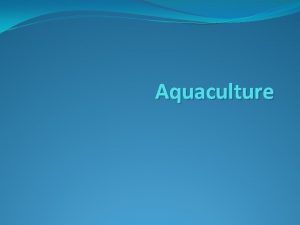Environmental Impact of Aquaculture Aquaculture Production World production










- Slides: 10

Environmental Impact of Aquaculture

Aquaculture Production • World production doubled since 1984 - 20, 900, 00 mt of fish and shellfish in 1995 • U. S. production has grown by 5 -10 % each year over the past decade - 400, 000 mt of fish and shellfish worth $729 million in 1997 • U. S. aquaculture production is expected to continue to increase steadily

Aquaculture wastes • Wastes consist primarily of uneaten fish feed and fecal and other excretory wastes - Source of nutrient pollution oxygen depletion algal blooms fish kills - Source of nutrient pollution toxic algae (Pfiesteria) fish kills, contaminate shellfish and pose a health hazard to humans

Aquaculture wastes (continue) • Fish feces can carry pathogens which can infect humans - Example : Streptococcus bacteria • Wastes can carry chemicals such as antibiotics to control disease and pesticides to control weeds, algae, and parasites - Copper-based algae-killers - Aquaculture chemicals in food harm or kill shellfish harm humans

Biological Pollution • Introduction of unwanted non-native species to natural ecosystems - alter species composition - reduce biodiversity - introduce diseases and parasites

Reducing Nutrient and Chemical Pollution • Use feed designed to protect the environment - low fishmeal content - minimize fish wastes • Raise fish together with mollusks or hydroponic vegetables - make optimum use of water and nutrients - minimize farm wastes

Reducing nutrient……. (continue) • Closed aquaculture systems can treat wastes with mechanical chemical and biological filters • Open aquaculture systems can place their cages and netpens in areas with strong currents or tides - flash waters avoiding waste accumulation

Reducing nutrient……. (continue) • Chemical pollution can be minimized by practicing preventive medicine - stock fish free of pathogens and parasites - minimize stresses on fish - vaccinate fish against disease

Reducing Biological Pollution • Carefully choose the species or strains for farming - use only native species - use strains of non-native species that cannot survive and reproduce outside captivity • Take measures to minimize escapes of cultivated fish into natural waters • Grow reproductively sterile species

Conclusion • Aquaculture facilities constructed without environmental protection in mind can cause serious environmental degradation • A variety of strategies and technologies are now available to make fish farming environmentally sound • The use of these strategies can make aquaculture more acceptable by the wider public and more productive
 Bagan alur proses produksi multimedia
Bagan alur proses produksi multimedia Environment impact assessment ktu syllabus
Environment impact assessment ktu syllabus Ipat model of environmental impact
Ipat model of environmental impact Ipat model of environmental impact
Ipat model of environmental impact Agent orange environmental impact
Agent orange environmental impact Ipat model
Ipat model Ipat model
Ipat model Environmental impacts of tidal energy
Environmental impacts of tidal energy Rapid environmental impact assessment in disaster
Rapid environmental impact assessment in disaster What is environmental impact assessment
What is environmental impact assessment Difference between eia and iee
Difference between eia and iee

